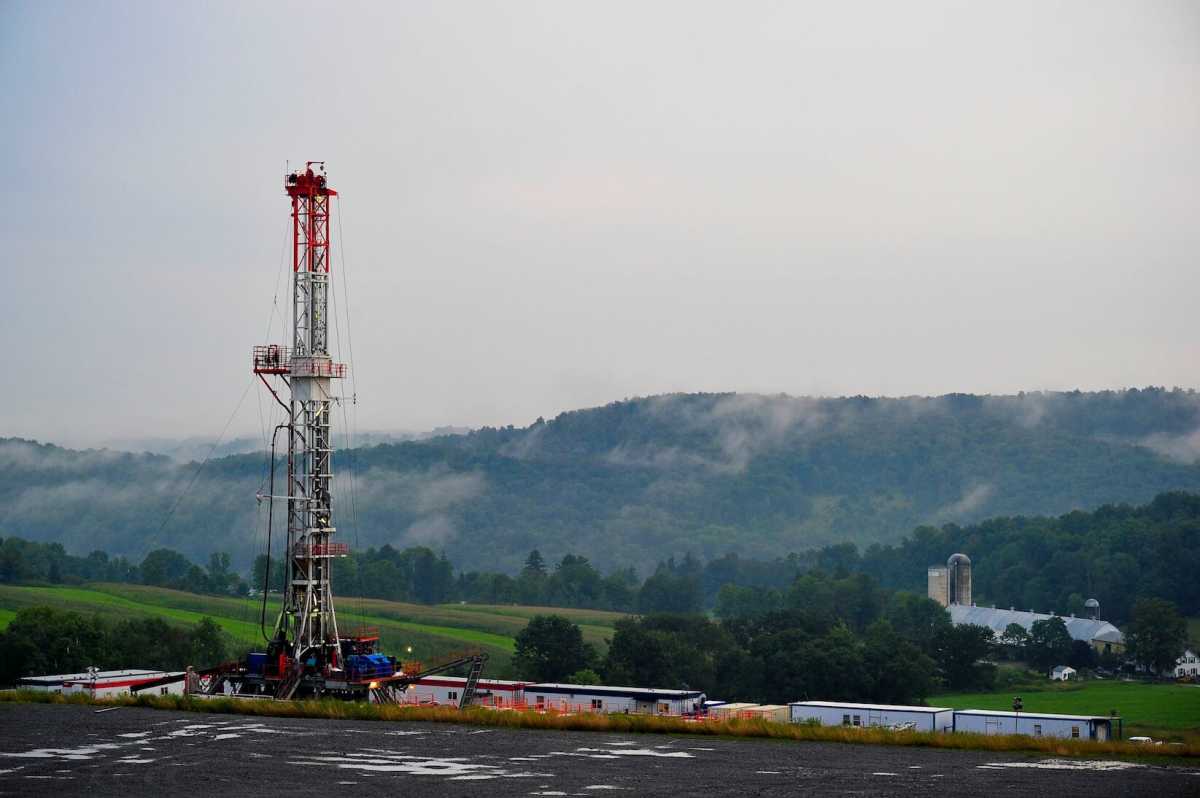An environmental research group’s latest report said ongoing fracking operations may be causing health risks for children who live and play nearby.
The report found 45 schools and 54 child care providers were located within half a mile of frackingwells. If the radius were expanded to two miles, that number would go up to 476 schools and 467 child care providers. PennEnvironment estimated that statewidemore than 53,000 children under age 10 lived within a mile of a permitted fracking well site. And even though the report did not include specific cases of children sickened by their proximity to fracking , Dr. Walter Tsou, president emeritus of Philadelphia Physicians said he had no doubt that such cases existed. HedescribedPennsylvania as the “blinded guinea pig” of the health effects of fracking. “Why is that we have suppressed these known health effects? I think it is because there ismoney to be made in fracking.People are putting aside and ignoring these potential health consequences,” Tsou said. Symptoms reported byresidents who live around fracking operations include nausea, respiratory problems, headaches and eye irritation. Astudy by John Hopkins University released last weekfound expectant mothers living near fracking operations were 40 percent more likely to give birth prematurely. Related tag:Study links hospitalizations to rise of fracking
Tsou also claimed that individuals in proximity to fracking sites who have reported illnesses are being required to sign non-disclosure agreements in return for compensation.
Tsou said the debate over whether fracking actually damages health could be illuminated by independent before-and-after studies of air and water around fracking sites for signs of pollutants.
“The industry actually refuses to encourage such studies, even though they say it is safe,” Tsou said.
Related tag: Fracking activists gear up as Wolf takes office
Ruth McDermott-Levy, a Villanova University professor, said state Department of Environmental Protection reports have found that air quality is impacted by fracking, and that fracking is also associated with rising levels of radon gas, but that this kind of researchis not being collected. “We’re not gathering this data. We have no way of following these people,” she said.
David Masur, executive director of PennEnvironment, said while there are no specific cases of children sickened by proximity to fracking in the report, scientific evidence strongly suggests fracking puts these children at risk “It is often hard to connect any one environmental factor with health problems… it’s a little like asking which is the one cigarette that gives someone lung cancer,” he said. PennEnvironment and health experts who reviewed and signed the report recommend policies including a one-mile border between fracking operations and schools, hospitals, nursing care facilities or child care providers, creating a public health registry for individuals to report issues associated with fracking, and banning open-air waste pits used to store flowback water used in fracking. Read the full PennEnvironment report, “Dangerous and Close.”
Penn. fracking is too close to children, environmentalists warn

Charles Mostoller



























